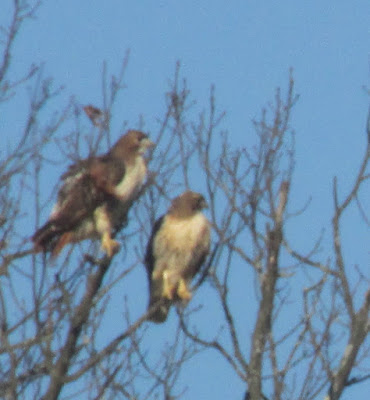I live in Gettysburg, Pennsylvania, where almost everyday I see Red-tailed Hawks, the most common of all hawks in North America. I saw this one perched high in a tree behind the Bushman House, a historic farming property on the Gettysburg Battlefield.
As the most prevalent hawk, red-tails should be your first guess when sighting a perched hawk or one soaring in the sky. If the hawk has a white chest, white belly, and a "belly band" of striped markings, as this one, then the identification is complete: Red-tailed Hawk. You can be confident of this identification everywhere in the eastern states.
Of course, the mature adult can be accurately identified by its rufous or red tail which can be seen from below when the hawk soars overhead, especially when aglow with the sun. However, the tails of immature hawks are brown with darker bands. Therefore, using tail color alone is not the best option when identifying this hawk. Additionally, red-tails will always (whether juvenile or adult) display dark patagial strips on the leading edge of the wing. When seen against the light underbelly of the hawk, these markings from head to wrist are conspicuous and another determining feature for identification of the red-tailed hawk.
To my great delight, this hawk was quickly joined by another! These might well be a mated pair, though it's difficult to assess their sizes (females are larger than males) given their separate perches.
Here's wishing you all a wonderful New Year in 2023 with many fortunate sightings of the Red-trailed Hawk!


No comments:
Post a Comment